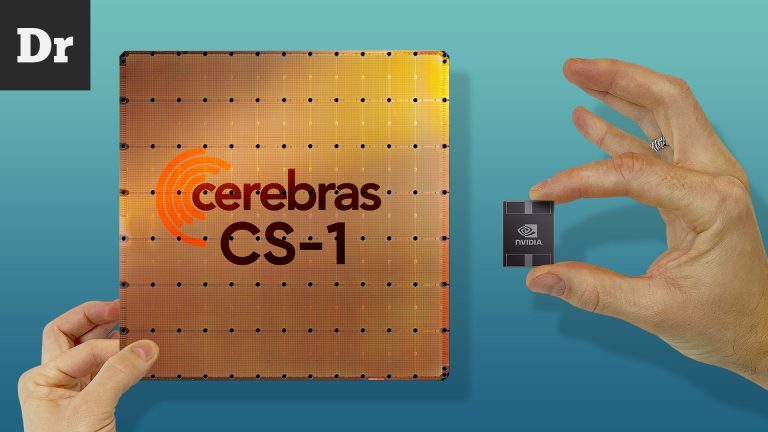Intel Xeon D – what is it and what is it for?
Intel Deep Learning Boost. A technology designed to accelerate deep learning tasks on Intel processors. It includes a set of instructions such as AVX-512 VNNI and AVX-512 BF16, which improve the performance of deep learning-related operations such as convolutional neural networks;
Intel Xeon D Specifications

The current single-chip 64-bit Intel Xeon D processors are built on the Ice Lake architecture with Sunny Cove cores. The configuration of these chips includes an integrated Intel Ethernet network adapter with a throughput of 50-100 Gbps. Thanks to the integrated adapter, delays are reduced and the efficiency of data exchange between the processor cores and the network controller increases. Despite the integration of the network adapter, Intel engineers have provided support for an additional 32 PCI Express 4.0 lines, as well as USB 3.0, SATA 3.0 and other peripheral controllers. Despite its modest dimensions, Intel Xeon D has a 4-channel DDR4-3200 Mhz controller with support for full-fledged ECC REG server memory. Thanks to this, Xeon D can support up to 1 TB of memory. In the compact Xeon D, Intel was able to place from 2 to 20 cores at a relatively high clock frequency of over 3 GHz, while maintaining a very low TDP – from 40 W (Xeon D 1712TR) to 129 (Xeon D 2796TE) W.
At the moment, there are 2 current lines of Xeon D processors – Xeon D-1700 and Xeon D-2700. Both series have integration with Intel Deep Learning Boost technology, which allows them to be used to work with various applications using artificial intelligence. However, in other aspects, these technologies have some differences. Let's consider how these series differ and what tasks they are suitable for.
Intel Xeon D-1700

The Xeon D-1700 series on BGA2227 sockets consumes less power and is aimed at tasks with moderate performance requirements and is intended for embedded systems, cloud applications and management systems. These processors are suitable for virtualization, deployment of small and medium business applications, have a three-channel memory controller, and also offer advanced power management features. The Xeon D-1700 also has support for Intel Deep Learning Boost, but with fewer features compared to the D-2700.
Number of cores – up to 10 pcs;
Number of memory channels – 3x DDR4 2933Mhz;
Maximum memory capacity – up to 348 GB;
Maximum frequency – up to 3.5 GHz;
TDP – from 25 W to 90 W.
Intel Xeon D-2700

The Xeon D-2700 series processors on the BGA2579 socket were designed with an emphasis on high performance and specialized computing. They offer greater computing capabilities and higher memory bandwidth with four-channel controllers. The D-2700 series also has advanced security and memory management features. Unlike the Intel Xeon D-1700 series, the B-2700 processors integrate Intel QAT technology, which increases the speed of encryption and data compression, and effectively distributes the load across the cores, making these chips an effective solution for a wide range of tasks.
Number of cores – up to 20 pcs;
Number of memory channels – 4x DDR4 3200Mhz;
Maximum memory capacity: up to 1 TB;
Maximum frequency – up to 3400 GHz;
TDP – from 65 W to 129 W.
Integrated Network Adapter in Xeon D

With a single-chip system, Xeon D processors have an integrated Intel Ethernet network adapter. These controllers support programmable data processing at speeds up to 100 Gbps, and they also integrate RDMA (Remote Direct Memory Access) technology.
RDMA is a technology that provides direct remote access to computer memory without using OS resources. Thanks to it, data transfer is carried out with low latency and high throughput. RDMA is especially useful when used in large parallel computing systems, such as virtualization infrastructures and data centers. RDMA technology is supported by the iWARP and ROCE remote memory access protocols.
In addition, the integrated Intel Ethernet adapter has a data access control system and support for RSS functions for distributing data packets between processor cores. Also, the network adapter for the D-2700 series of processors has an additional feature, namely support for a data packet switch. The integrated Intel Ethernet adapter is an advanced solution that supports current technologies inherent in individual network products from Intel and Mellanox, which makes it a serious competitive advantage for Xeon D processors.
Applications of Intel Xeon D
Due to the fact that Xeon D maintains high performance and energy efficiency in its compact form factor, these chips are widely used in low-power infrastructures with high equipment installation density. Xeon D are integrated into systems based on 1U and 2U micro-servers, since due to the compactness of the motherboard, the processors have significant limitations on the length of the equipment case. For example, Xeon D is suitable for data centers, as well as various infrastructures for deploying corporate applications and network communications.
But Intel Xeon D can show itself most effectively in areas such as Edge computing, working with video streams, and AI training. Let's take a closer look at why Xeon D is so useful for integration in these niches.
Edge computing

Intel Xeon D processors are particularly well suited for edge computing. Intel Xeon D processors are ideal for embedded systems where compactness and reliability are critical. Unlike other Xeon chips that do not have the appropriate technical characteristics, Xeon D processors work successfully in industrial PCs, small form factor devices and sealed fanless devices, ensuring continuous operation of systems in the harshest conditions. This is achieved thanks to the extended temperature ranges of the BGA socket. In addition, with the help of RAS, workload consolidation and verification of a single software platform for several applications at once, Xeon D processors can be successfully integrated into various real-time control systems. Taking all this into account, Xeon D processors provide server-class performance within their modest form factor.
Artificial Intelligence and Machine Learning

The Intel Xeon D processors of the Xeon D-1700 and Xeon D-2700 series feature Deep Learning Boost technology, which significantly improves the performance of tasks related to artificial intelligence and deep machine learning. Intel DL Boost includes specialized instructions that optimize floating-point and integer calculations, significantly accelerating the training of neural networks. With Deep Learning Boost technology, the Xeon D embedded processor lineup keeps up with modern trends and contributes to the development of the AI and machine learning industry.
Further development of Xeon D

Today, Intel's official website contains information about plans to release updated Xeon D 1800/2800 processor lines in Q4 2024. Unfortunately, the update will not bring significant changes, as the new processors will still be based on the outdated Ice Lake D architecture. However, it is planned to increase the number of cores and integrate Intel Speed Select technology, which may have a positive effect on optimizing the thermal package of processors. Probably, such a minor update is due to Intel's financial difficulties, which forces the company to save money. Despite this, Xeon D remains a leader in building systems for Edge Computing and IoT.
Results
Looking at all these distinctive characteristics, Intel Xeon D processors can be confidently called a truly unique product that has managed to cover a huge number of niches – from edge computing in harsh operating conditions to working with artificial intelligence. The compactness of the single-chip system, the thermal stability of the BGA socket, the integrated network adapter with a throughput of up to 100 Gbps, as well as an abundance of useful technologies make Intel Xeon D an ideal solution for the Edge computing and Internet of Things sector. If you are looking for a compact and reliable server system, then Intel Xeon D processors can be an excellent solution for integration into your network infrastructure.





